A new federal report has reignited outrage over helicopter safety in Hawaii. The FAA revealed that the pilot in a deadly 2019 crash on Oahu was improperly certified — and the person who signed off on him lacked the authority to do so.
This follows a recent FAA proposal to lower helicopter flight altitudes over Kauai, sparking further concerns about safety and environmental impact. Together, these developments are shining a harsh light on Hawaii’s helicopter tour industry and the FAA’s oversight role.
The 2019 crash killed the pilot and two visitors in the Kailua neighborhood of Oahu. It was a tragic and shocking event, made worse by the latest revelation that FAA oversight failures contributed to the disaster.
This news was first reported by Honolulu Civil Beat, which obtained the FAA’s findings through a public records request.
A crash that never should have happened.
In April 2019, a Novictor Aviation helicopter broke apart mid-air over a residential area of Kailua, Oahu. The crash tragically claimed the lives of the pilot and two visitors.
Now, the FAA admits the pilot should never have been flying. His certification, completed just days earlier, was signed off by the company’s owner — someone not even authorized to do so.
As Hawaii Congressman Ed Case, who has long pushed for stricter oversight of Hawaii air tours, warned this week — without a full investigation and accountability, critical safety risks for visitors remain.
The FAA investigated itself.
It’s role in this tragedy didn’t end with the crash itself.
FAA safety inspector Joe Monfort, who was part of the investigation, raised internal alarms about the pilot’s improper certification. But according to a CBS News report, Monfort said he was soon sidelined — denied travel authorizations and ultimately removed from the Kailua crash investigation after speaking up.
Monfort believed the move was retaliation for raising safety concerns. The FAA, for its part, maintained that the removal was related to workload.
For Hawaii visitors, that controversy leaves lingering questions about how serious the FAA really is when it comes to air tour oversight — especially in a state where weather, terrain, and risk collide so often.
A deadly pattern.
For Hawaii visitors, the Kailua crash wasn’t an isolated incident.
Just months later, another tour helicopter crashed near Kauai’s Na Pali Coast, killing seven people — including three children. That crash was later deemed 100% preventable, with both pilot decisions and FAA oversight failures to blame.
In total, between April and December 2019, three air tour crashes in Hawaii claimed 21 lives — a grim pattern that calls FAA oversight into question.
What has changed?
The FAA says it has made improvements — including installing five weather camera sites across Hawaii (two on Kauai), with plans for 23 total statewide. Each site can support up to four cameras, helping pilots check real-time weather conditions before and during flights.
Helicopter companies, meanwhile, point to extensive pilot training, upgraded equipment, and their own safety records.
But for critics, enforcement — not just technology — remains the missing piece.
As reader Kevin H put it, “Pilots risk spatial disorientation as well as collisions if they ignore these rules.” And without stronger FAA oversight, many worry that even the best technology can’t fix human decisions made in fast-changing island weather.
Why this matters to visitors.
Helicopter tours remain among Hawaii’s most popular — and wallet-busting experiences, offering views of remote waterfalls, cliffs, and valleys that can’t be seen any other way. But behind those views lies a troubling safety record that gives many visitors pause.
Reader Anne H told us the safety concerns absolutely shape her travel choices. Growing up in the islands and knowing the history of these accidents, she said helicopter tours are never on her list of recommendations.
Others shared similar hesitation. Cindy M recalled advice from someone who grew up on Lanai: never fly a helicopter tour in Hawaii because of the fatal crash history and unpredictable island weather.
Still, not everyone is deterred. Shawn C shared their own experience taking an open-door helicopter tour with Jack Harter Helicopters, fully aware of the risks — and loving every minute of it.
It’s that tension — breathtaking views vs. real safety risks — that makes this decision so personal. Would you still book a helicopter tour knowing the risks involved?
Even Beat of Hawaii editors felt the pull.
Despite years of covering these safety concerns and a personal dislike for the noise and intrusion of helicopters when hiking in Hawaii, Beat of Hawaii editors booked and experienced a Jurassic Falls helicopter tour on Kauai.
The views were unforgettable. Standing at the base of Jurassic Falls, surrounded by towering cliffs, it was easy to understand why visitors take the risk.
But as the helicopter later approached cloud-shrouded peaks with little room for error, we were reminded exactly why this remains one of Hawaii’s most personal travel decisions.
The bigger problem: FAA’s conflicting role.
Critics argue the root problem lies in the FAA’s dual mission — promoting aviation while regulating its safety. This creates an inherent conflict of interest.
As reader Tom S put it, “Perhaps the structure should give the NTSB more power and avoid having the inherent conflict of the FAA with its dual mission of promoting air travel and safety.”
This latest report is yet another example of how that conflict can leave serious safety concerns unaddressed.
What visitors can do.
If you’re considering a Hawaii helicopter tour:
- Choose companies with strong safety records.
- Ask about pilot experience in Hawaii’s unique conditions.
- Consider larger turbine helicopters over smaller models.
- Research NTSB reports and recent incidents.
- Explore alternative scenic experiences, such as boat tours or hiking.
As reader Bob C put it: “Flying around in helicopters is an unnatural death wish. Hawaii is beautiful from the ground, and that’s where I’ll keep my feet.”
Final thoughts.
The latest FAA report confirms what many have long feared: federal oversight of Hawaii’s helicopter tour industry remains dangerously flawed.
Yet, the breathtaking views these tours offer continue to be a powerful and undeniable draw for visitors.
Ultimately, each visitor must weigh the reward of unforgettable views against the very real safety risks. For now, the tension between stunning adventure and systemic failure remains unresolved.
Would you still book a helicopter tour in Hawaii? We’d love to hear your thoughts.
Get Breaking Hawaii Travel News
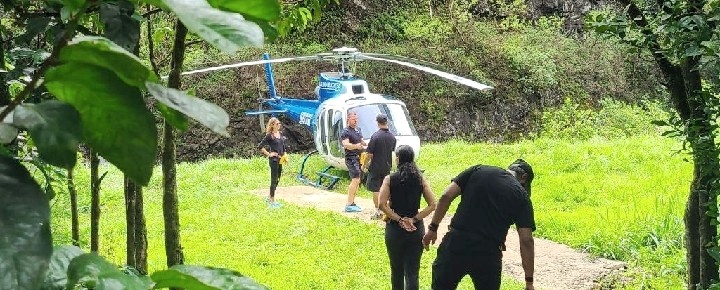
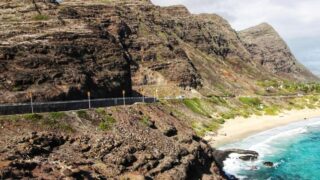
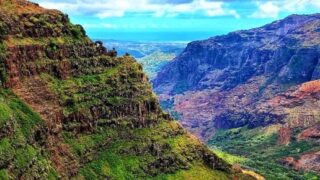

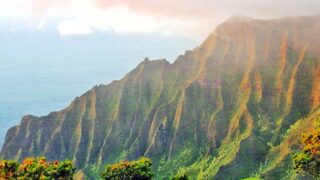
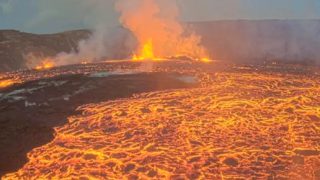
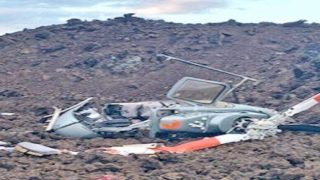
It would behoove FAA to identify first all the companies with licenses that provides tours.
– each company should be identified via safety record and types of crafts they are licensed to fly R22-66, Bells etc.
– size of company and number of CFIs, CIIs etc allowed to fly tours.
– identify accidents and cause but especially maintenance records on the helicopters flown.
This can be done via official submittal and unannounced visits.
Make public all information.
Provide rating (A, B C etc), which MUST be displayed and easily seen by clients wishing to tour.
Lastly, insure new trainees at Air Traffic are tightly supervised.
Wishing you all the best.
We took Jack Harter Helicopters back in the 80’s on Kauai Isle. It was spectacular, safe flight, with an excellent pilot. I loved the trip, but would not do again due to the lower quality of FAA, etc. I will just hold my memories of the 80’s/
I have taken a helicopter tour on Kauai and the Big Island. I went early in the morning before the clouds started to show up and didn’t have any weather problems. Both were on the larger, turbine driven helicopters.
Our family of 6 went on a helicopter tour of West Maui & Molokai with Air Maui that has a great safety record. Our pilot, Dylan, was very experienced and we felt at ease throughout the flight. Since then, there was a NYC helicopter that crashed, killing 6 people, including children. I am glad we did the flight, that being my 2nd helicopter tour of Maui, but I may quit now while I am ahead. My grandchildren are involved & they mean everything to me. I am glad they got this experience and that it was safe for us.
Honestly, every tour company across the islands needs more oversight.
The tour company owners are craven capitalists who risk tourists’ and guides’ lives to make $500 more. Be safe out there.
Too bad, we have wanted to do a helicopter tour over west Maui, especially during whale season. We did two helicopter tours, one over the Big Island to see the volcanic lava flows and one over the Grand Canyon. Loved both. But will have a deep think whether to roll the dice about doing one over Maui.
Why bother the whales with the helicopter noise? That doesn’t make any sense …and here I was worried about Regent’s seaglider hurting the whales. Frankly, I didn’t know helicopter tours were allowed in Maui during whale season …
Helicopter noise bothering the whales?? Ha! You should see all the tourist boats/catamarans chasing the whales and getting way too close. Not to mention the hydrofoils and jet skis. We see it every year. There used to be a jet boat called the “Wild Thing” running along the Kaanapali beaches during whale season, but think it has been gone since covid, thank goodness.
Back in the 1980’s, I took my first helicopter tour. It was over Kahui and was breathtakingly beautiful. The pilot was a Viet Nam war ( the helicopter war ) veteran. His flying skills were impressive. He could hover that bird so close to the waterfalls that mist would form on the windshield! Those types of expert helicopter jockies are all retired now. I felt totally safe with him at the controls.
Oh My Gosh, that was same pilot we had. He looked like Kevin Bacon and we just Loved our flight. I would never do it again now, but it sure was something back then.
No. My husband is a retired firefighter whose job also included search and rescue work. As experienced as the helicopter pilot may be, there’s always the possibility something could go wrong with the helicopter or Mother Nature. He was always relieved when his feed was back on the ground. At times, the helicopters he was flying in didn’t have doors either, thank goodness for seat harnasses. We went on an Alaska cruise and I really wanted to book a tour on a seaplane – husband refused that, too. On our first day in port, two seaplanes collided killing 11 passengers. Four of those passengers were from our cruise ship. Yeah, I got that ‘look’ from my husband.
I must say that seaplanes always fascinated me, but for now, I am waiting for the seaglider to arrive on Hawaii (check out Regent from Rhode Island).
When visiting Kauai last Christmas for the 1st time in 30 years, I was stunned by the beauty of that island (although I live in Maui). Only when I arrived in Lihue for a hike near the Harbor, was I reminded of the helicopter noise locals complain about. I must say, it’s more than annoying and since those tours are also dangerious, I hope local residents will be involved in banning them (or at least, limited them). Why wait for the next catastrophe? It might land on your property next time!
BOH might want to write a fuller explanation of the proposal. I know it comes from Blue Hawiian, it has several parts dealing with lower flight heights and cloud separation. So, in some ways it sounds less safe but also more safe. A little detail and context would help.
I’ve done these tours 3 times on Kauai and enjoyed it each time. The first time we didn’t even complete the full circuit as there was heavy rain over the Princeville area so we doubled back over the Alakai Swamp and along the south shore. We got to see some things you don’t normally see on a tour. Being a pilot myself, I know pilots, by nature, are goal oriented people, and the goal here is to complete the tour as planned. So, what may be needed here not just a company stated goal of safety, but an enforced one. Many of these tours have video equipment on board, so safety reviews could be conducted especially if there is any question about a certain flight. If you endanger lives, you’re gone. Better to have a few grumpy passengers than dead ones. Good luck with the FAA, especially after all the firings.
I’m a former U.S. Army CH-47 Chinook combat pilot and instructor. A few years back I stopped by the Princeville airport. Curious about Hawaii helicopter touring dismal safety record I listened to the safety briefing the pilot was giving to a group of passengers. I thought the briefing was totally inadequate dismissing the consequences of emergency landing in the ocean.